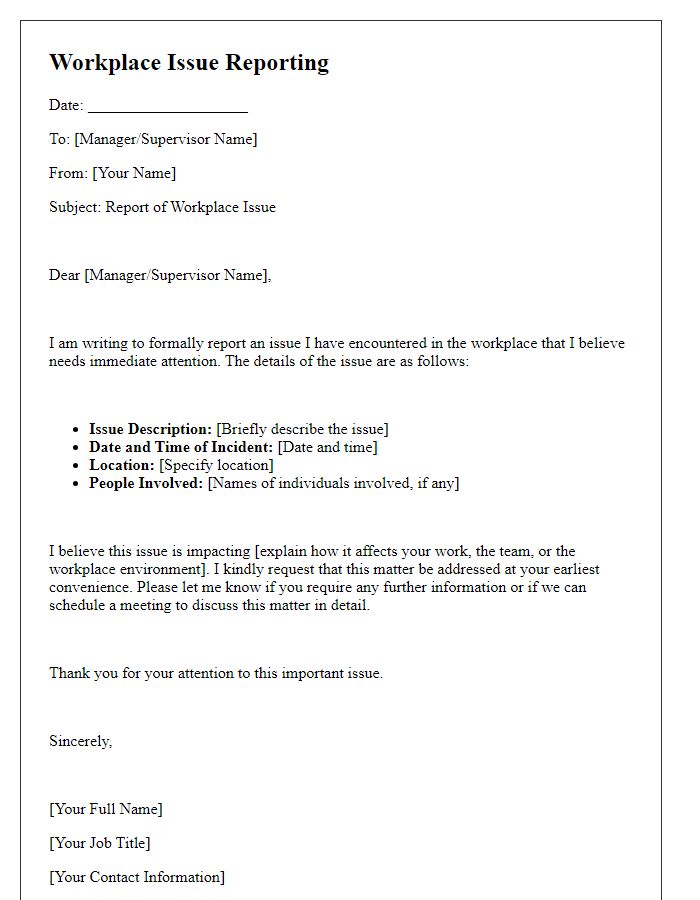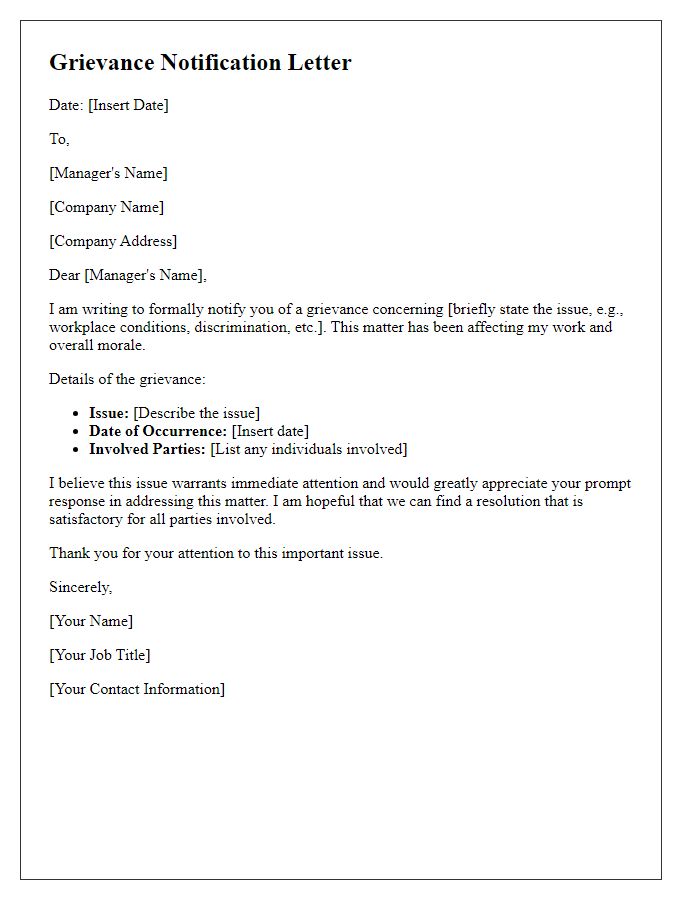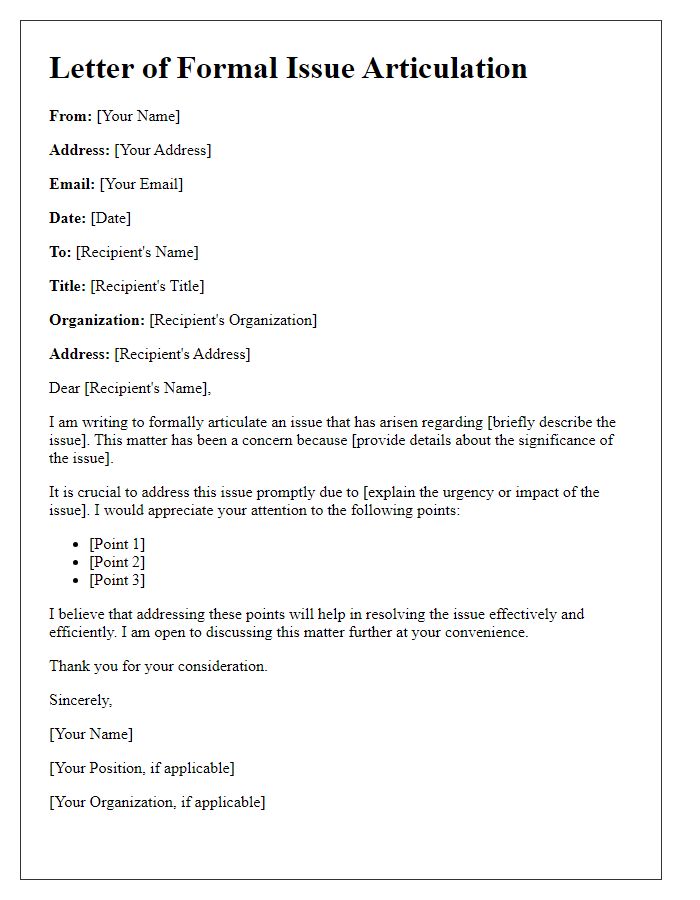Navigating the complexities of workplace issues can be challenging, and when grievances arise, it's essential to communicate them effectively. A well-structured grievance letter not only outlines your concerns but also sets the stage for resolution. In this article, we'll walk you through a comprehensive letter template that ensures you express your feelings clearly and professionally. Ready to learn how to address your concerns with confidence? Let's dive in!

Employee Information
Employee grievance filings require comprehensive documentation to ensure clarity and proper evaluation. Essential employee information includes name, typically formatted as first and last, employee identification number (often a unique numeric or alphanumeric code), job title indicating role within the organization, department name denoting specific operational category, and contact details consisting of email address and phone number for effective communication. Dates associated with the grievance are also crucial, including the date the issue arose and any relevant timelines. Additionally, a detailed description of the grievance should be included, outlining specific incidents, conflicts, or complaints, along with any witnesses or supporting documentation to substantiate claims.
Description of Grievance
Employees experiencing workplace issues may file a grievance to address concerns affecting their job satisfaction. A grievance often includes issues such as discrimination based on race, gender, or age; workplace harassment incidents; unsafe working conditions that violate Occupational Safety and Health Administration (OSHA) regulations; or unfair treatment in promotion opportunities outlined in company policies. When drafting a grievance description, employees should provide specific details regarding the incident, including the date (for example, July 15, 2023), location (e.g., Company XYZ office in New York City), involved parties (including direct supervisors and coworkers), and any witnesses present during the incident. Accurate documentation of previous discussions with human resources or management can also strengthen the grievance, ensuring all relevant facts are presented clearly while adhering to an organization's grievance protocol.
Relevant Dates and Events
Employees seeking to file grievances should clearly outline relevant dates and events impacting their concerns. For instance, documenting incidents such as harassment on April 15, 2023, during a team meeting at the corporate headquarters in New York City can provide context. Additionally, referencing ongoing issues like unaddressed complaints made to a supervisor on March 20, 2023, or changes in company policy communicated on February 10, 2023, can further substantiate claims. Specific details about performance reviews, such as the annual evaluation held on January 5, 2023, may also highlight patterns of behavior that contribute to the grievance. Providing a timeline of events ensures clarity and relevance in the grievance process.
Desired Resolution
Filing an employee grievance typically involves outlining specific issues and desired resolutions. In this context, the desired resolution (based on the grievance details) might include a variety of actions such as conflict mediation, policy changes, or disciplinary actions against another employee. For example, if an employee experiences harassment (which can involve inappropriate comments or behavior in the workplace), a desired resolution might include a formal investigation by human resources, enhanced training programs for staff regarding workplace conduct, or reassignment of involved parties. Clear communication of the desired outcome significantly aids in the grievance process, ensuring that all parties understand the intended resolution.
Contact Information
When addressing employee grievances, including contact information is crucial for facilitating efficient communication. Typically, this section should clearly list essential data, such as the employee's full name, job title, and department, presented in a structured format for clarity. Additional details often include the employee's work email address and phone number, enabling HR representatives or managers to reach out with ease. Providing the date of grievance submission can aid in tracking the timeline for resolution, ensuring adherence to company policy. Furthermore, the inclusion of alternative contact methods, such as a personal email or secondary phone number, may enhance accessibility and expedite the follow-up process.













Comments